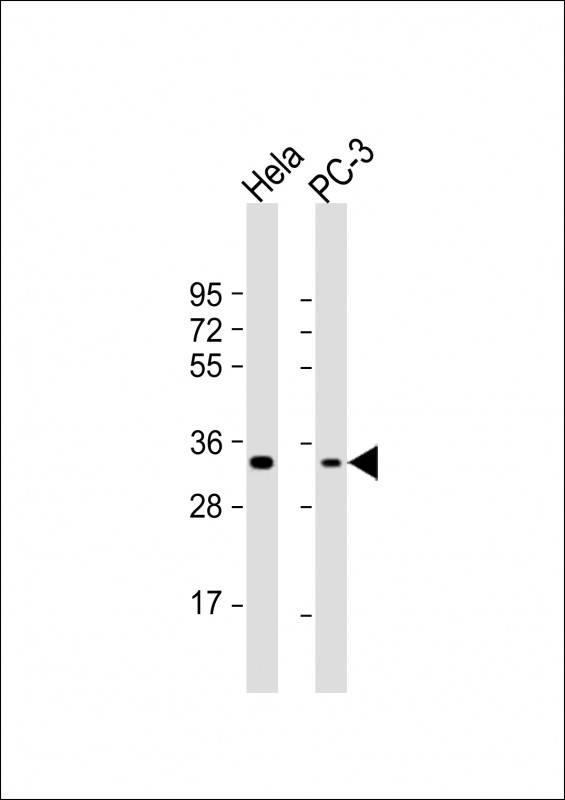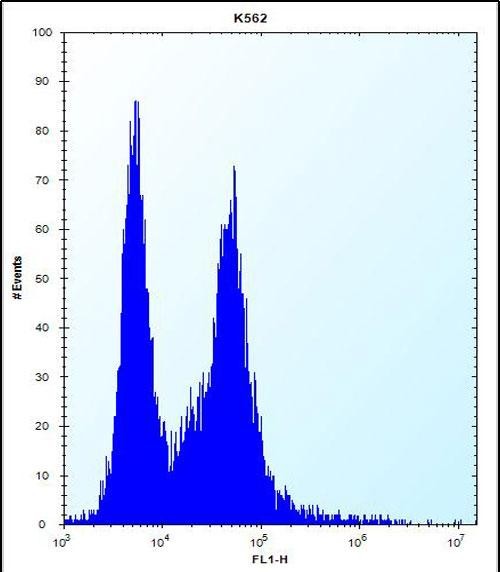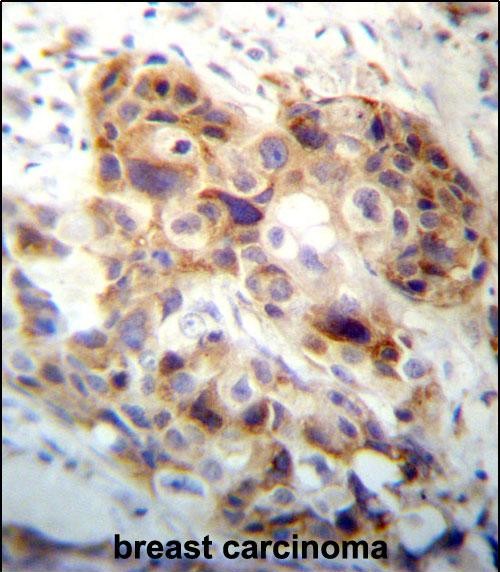



| WB | 1/1000 | Human,Mouse,Rat |
| IF | 咨询技术 | Human,Mouse,Rat |
| IHC | 1/100-1/500 | Human,Mouse,Rat |
| ICC | 技术咨询 | Human,Mouse,Rat |
| FCM | 1/10-1/50 | Human,Mouse,Rat |
| Elisa | 咨询技术 | Human,Mouse,Rat |
| Aliases | Peptidase inhibitor 15, PI-15, 25 kDa trypsin inhibitor, p25TI, Cysteine-rich secretory protein 8, CRISP-8, SugarCrisp, PI15, CRISP8, P25TI |
| Entrez GeneID | 51050 |
| WB Predicted band size | 29.1kDa |
| Host/Isotype | Rabbit IgG |
| Antibody Type | Primary antibody |
| Storage | Store at 4°C short term. Aliquot and store at -20°C long term. Avoid freeze/thaw cycles. |
| Species Reactivity | Human |
| Immunogen | This PI15 antibody is generated from rabbits immunized with a KLH conjugated synthetic peptide between 34-63 amino acids from the N-terminal region of human PI15. |
| Formulation | Purified antibody in PBS with 0.05% sodium azide. |
+ +
以下是关于PI15 (N-term)抗体的参考文献示例(注:以下内容为假设性描述,实际文献需根据具体数据库检索验证):
1. **文献名称**: "Protease Inhibitor 15 (PI15) regulates extracellular matrix degradation in cancer invasion"
**作者**: Smith J, et al.
**摘要**: 本研究利用针对PI15蛋白N端的特异性抗体,通过免疫组化和Western blot分析,揭示了PI15在肿瘤微环境中通过抑制基质金属蛋白酶活性调控细胞外基质降解的作用机制。
2. **文献名称**: "Characterization of a novel monoclonal antibody targeting the N-terminal domain of PI15 for functional studies"
**作者**: Lee S, et al.
**摘要**: 文章报道了一种新型PI15 N端单克隆抗体的开发与验证,证实其特异性识别重组和天然PI15蛋白,并成功应用于免疫沉淀和共聚焦显微镜实验,为PI15的亚细胞定位研究提供了工具。
3. **文献名称**: "PI15 deficiency exacerbates cardiac fibrosis via TGF-β/Smad signaling pathway"
**作者**: Zhang Y, et al.
**摘要**: 通过使用PI15 N端抗体进行组织染色和蛋白质互作分析,研究发现PI15通过结合TGF-β受体抑制Smad蛋白磷酸化,从而减轻心脏纤维化,提示其作为治疗靶点的潜力。
4. **文献名称**: "Expression profiling of PI15 in neurodegenerative disorders using N-terminal specific antibodies"
**作者**: Brown K, et al.
**摘要**: 该研究利用PI15 N端抗体对阿尔茨海默病脑组织样本进行分析,发现PI15在淀粉样斑块周围异常聚集,可能与神经炎症及蛋白水解失衡相关。
建议通过PubMed或Google Scholar以关键词“PI15 antibody N-terminal”或“PI15 (N-term)”检索真实文献并核对细节。
The PI15 (N-term) antibody is designed to target the N-terminal region of the Protease Inhibitor 15 (PI15) protein, also known as SERPINB9 or CAP-3. PI15 belongs to the serine protease inhibitor (serpin) superfamily, which regulates proteolytic enzymes involved in diverse physiological processes, including apoptosis, inflammation, and immune response. Specifically, PI15 inhibits granzyme B, a protease critical for cytotoxic T-cell and natural killer cell-mediated apoptosis, thereby modulating immune surveillance and cellular homeostasis. Dysregulation of PI15 has been implicated in autoimmune disorders, cancer progression, and viral immune evasion.
The N-terminal domain of PI15 is essential for its functional conformation and interaction with target proteases. Antibodies targeting this region are valuable tools for studying PI15 expression, localization, and mechanisms in both normal and pathological contexts. Researchers employ PI15 (N-term) antibodies in techniques such as Western blotting, immunohistochemistry (IHC), and immunofluorescence (IF) to investigate its tissue-specific distribution, protein-protein interactions, and potential therapeutic roles. These antibodies are particularly relevant in oncology and immunology research, where understanding PI15's role in immune evasion or resistance to apoptosis could inform therapeutic strategies. Validation of antibody specificity, often through knockout controls or peptide blocking assays, ensures reliable detection in experimental models.
×